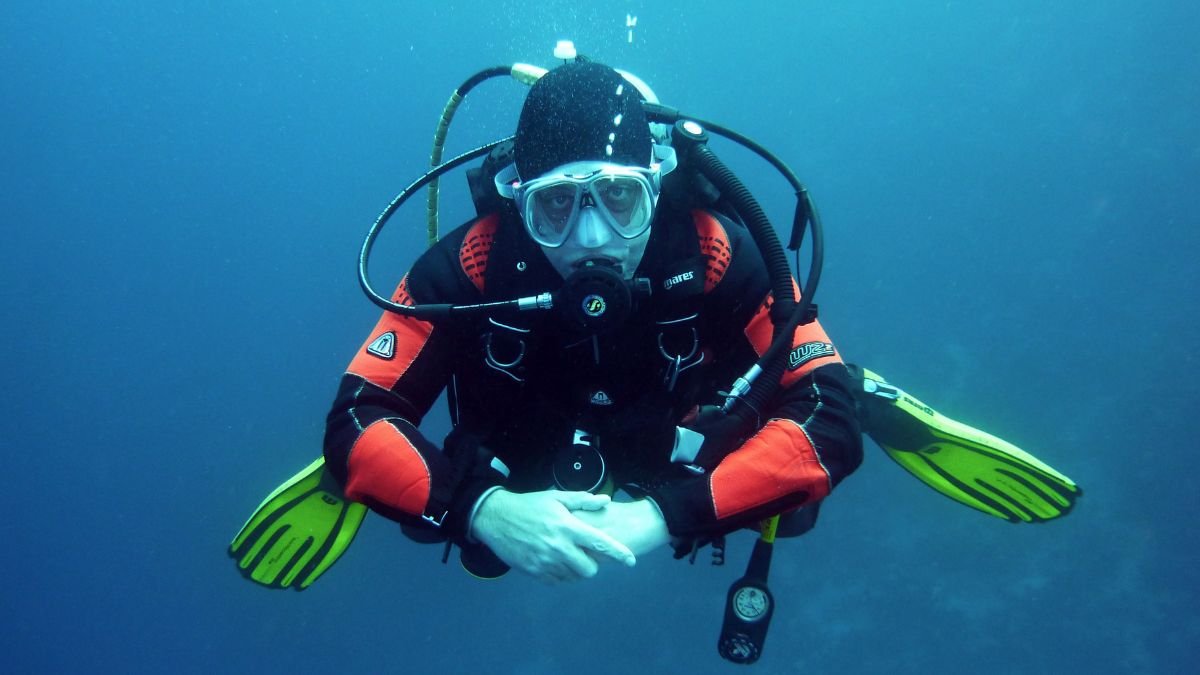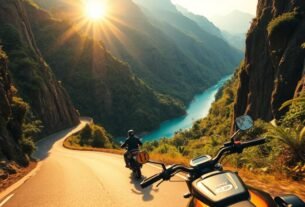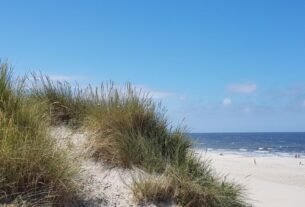Introduction
Have you ever wondered what it’s like to explore the hidden treasures beneath Brazil’s warm, crystal-clear waters? With its rich maritime history and vibrant marine ecosystems, Brazil offers some of the most captivating wreck diving destinations and is considered one of the Best Places to dive in the world. From the moment you descend into the depths, you’re greeted by a mesmerizing underwater landscape filled with colorful corals and an array of fascinating marine life.
Whether you’re a seasoned diver or just starting out, the country’s underwater sites promise an unforgettable experience. Each dive site is a portal to the past, where the remnants of sunken vessels are now home to diverse species of fish, sea turtles, and even the occasional dolphin. The unique combination of history and nature creates an enchanting atmosphere that captivates divers of all skill levels.

Brazil’s shipwrecks are more than just remnants of the past—they’re thriving habitats teeming with marine life. From the coral-covered hulls of sunken ships to the schools of colorful fish that call them home, each site tells a unique story. With over 107 dives across the globe, I’ve curated a list of 12 must-visit locations that cater to divers of all skill levels.
What makes Brazil stand out? It’s the perfect blend of warm waters, accessible wreck sites, and a rich underwater biodiversity. Dive into this guide to discover why Brazil is a top choice for wreck diving enthusiasts.
Key Takeaways
- Brazil is a premier destination for wreck diving, offering diverse underwater ecosystems.
- The shipwrecks are historically significant and home to vibrant marine life.
- This article features 12 curated sites suitable for divers of all experience levels.
- Brazil’s warm waters and accessible locations make it ideal for scuba diving.
- The country’s unique combination of history and biodiversity creates an unmatched diving experience.
Best Places to Dive in Brazil
Brazil’s coastline offers a treasure trove of underwater adventures for wreck diving enthusiasts. Its extensive coastal geography, stretching over 7,000 kilometers, creates ideal conditions for exploring sunken ships and artificial reefs. The warm waters, ranging from 70°F to 82°F, and visibility of 15 to 100+ feet make it a prime destination for divers of all skill levels.
The country’s shipwrecks are steeped in history, from colonial-era vessels to modern artificial reefs. These underwater sites not only tell stories of the past but also serve as thriving habitats for marine life. Schools of colorful fish, coral-covered hulls, and even the occasional sighting of sharks make every dive a unique experience.
Seasonal variations play a significant role in planning your trip. Water temperatures remain warm year-round, but visibility can vary depending on the season. For example, the dry season (May to October) often offers the clearest conditions, making it the best time for underwater exploration.
Brazil’s wreck diving sites are comparable to global destinations like the Florida Keys’ Spiegel Grove wreck. However, what sets Brazil apart is its unique combination of history, biodiversity, and accessibility. Whether you’re a beginner or an advanced diver, there’s something for everyone.
For deeper wreck exploration, certifications like Advanced Open Water are highly recommended. These courses prepare divers for the challenges of navigating complex underwater environments, ensuring a safe and rewarding experience.
| Season | Water Temperature (°F) | Visibility (feet) |
|---|---|---|
| Dry Season (May-Oct) | 70-82 | 50-100+ |
| Wet Season (Nov-Apr) | 75-82 | 15-50 |
Brazil’s wreck diving destinations are more than just underwater sites—they’re gateways to a world of history, adventure, and vibrant marine ecosystems. Whether you’re planning your first dive or your hundredth, Brazil promises an unforgettable experience.
1. The Corveta V17 Wreck
Diving into the Corveta V17 wreck feels like stepping into a maritime time capsule. This former military vessel, which served Brazil’s navy, was intentionally sunk in the 1980s to create an artificial reef. Today, it’s a thriving dive site that attracts divers from around the world.
The Corveta V17 Wreck is situated in the beautiful coastal waters off the coast of Brazil, specifically near the vibrant city of Angra dos Reis. This area is renowned for its stunning landscapes and rich biodiversity, making it a prime location for divers seeking both adventure and the chance to explore historical sites.
History of the Corveta V17
The Corveta V17 played a significant role in Brazil’s naval history before its decommissioning. After years of service, it was repurposed as an artificial reef, providing a new habitat for marine ecosystems. Its sinking marked the beginning of its second life as a hub for underwater exploration.
Marine Life at the Site
The wreck is now home to a vibrant array of marine life. Schools of grunts and barracudas are common sights, while sharks occasionally patrol the area. The coral-covered hull supports numerous species, making it a hotspot for both underwater photographers and marine biologists.
Dive Conditions and Tips
With an average depth of 65 feet, the Corveta V17 is accessible to intermediate and advanced divers. Strong currents can be a challenge, so monitoring your air supply is crucial. A dive light is recommended for exploring the interior compartments, where you’ll find even more fish and unique formations.
Compared to California’s Yukon wreck, the Corvette V17 offers similar preservation and marine colonization. Its warm water temperatures and rich biodiversity make it a standout destination for wreck diving enthusiasts.
2. The Pirangi Wreck
The Pirangi Wreck is a hidden gem along Brazil’s northeastern coast, offering a unique underwater adventure that captivates divers of all skill levels. This dive site is known for its remarkably intact hull structure and thriving marine ecosystem, which provides a vibrant backdrop for exploration.
The Pirangi Wreck, situated in a region renowned for its stunning coastal scenery and rich maritime history, offers divers not only a glimpse into the underwater world but also a connection to the past. This captivating site is situated near the small fishing village of Pirangi do Norte, renowned for its picturesque beaches and vibrant local culture.
Whether you’re a beginner or an experienced diver, the Pirangi Wreck promises an unforgettable experience that combines the thrill of discovery with the beauty of the underwater world.
Exploring the Pirangi Wreck
The wreck’s intact hull provides excellent opportunities for exploration, inviting divers to navigate through swim-through passages that weave through the structure. As you explore, you’ll discover hidden compartments teeming with marine life, from colorful corals to vibrant schools of fish.
Schools of fish, including grunts and snappers, are common sights here, often darting in and out of the wreckage, creating a dynamic underwater spectacle. This interaction with marine life enhances the dive experience, making each visit unique and exciting.
Unique Features of the Dive
One standout feature is the visibility, which can reach up to 100 feet on a good day. This clarity rivals Florida’s Blue Heron Bridge, making it ideal for underwater photography, as divers can capture stunning images of the wreck and its inhabitants.
The coral-covered hull, which has become a canvas for marine growth, and occasional manta ray sightings add to the site’s allure, offering divers the chance to witness these majestic creatures gliding gracefully through the water. The combination of visibility and diverse marine life creates an enchanting atmosphere that is hard to match.
Best Time to Visit
For the best conditions, plan your trips between November and March. During this period, currents are calmer, and manta rays are more frequently spotted. The warm waters and clear visibility make it the perfect time for diving.
| Season | Visibility (feet) | Marine Highlights |
|---|---|---|
| November-March | 80-100 | Manta rays, calm currents |
| April-October | 50-80 | Schools of fish, coral growth |
Pair your visit with nearby reef dives for a multi-site itinerary. The Pirangi Wreck is a must-see destination for anyone exploring Brazil’s underwater wonders.
3. The SS Thistlegorm of Brazil
Exploring the SS Thistlegorm of Brazil is like uncovering a piece of WWII history beneath the waves. This iconic wreck is a testament to Brazil’s maritime heritage and a must-visit destination for divers seeking a unique underwater experience.
The SS Thistlegorm, situated in the clear, azure waters off the coast, is not only a fascinating dive site but also a significant piece of maritime history. This renowned wreck, located at a depth accessible to divers of various skill levels, serves as a poignant reminder of the past, encapsulating the essence of a bygone era. Its location offers divers a unique opportunity to explore not just the wreck itself, but also the vibrant marine life that has made this site their home.
Historical Significance
The SS Thistlegorm played a crucial role during World War II, transporting supplies for the Allied forces. It met its fate during a supply mission, sinking off Brazil’s coast. Today, it stands as a preserved relic, offering a glimpse into the history of wartime.
What to Expect Underwater
Divers will find the wreck’s cargo holds intact, filled with artifacts from its final voyage. Green sea turtles are frequent visitors, adding to the site’s charm. Nurse sharks often patrol the periphery, making it a thrilling trip for underwater enthusiasts.
Safety Considerations
Buoyancy control is essential to avoid disturbing the silt, which can reduce visibility. Penetration into the wreck’s interior is discouraged without proper technical certifications. Following guidelines similar to the Red Sea’s Giannis D wreck ensures a safe and enjoyable dive.
| Depth (feet) | Visibility (feet) | Marine Highlights |
|---|---|---|
| 80-100 | 50-80 | Green sea turtles, nurse sharks |
The SS Thistlegorm is more than a dive site—it’s a journey through history and a celebration of marine life. Whether you’re an intermediate or advanced diver, this wreck promises an unforgettable experience.
4. The Naufrágio do Parcel
Discover the vibrant marine world of the Naufrágio do Parcel, a must-visit dive site. This underwater gem is accessible via liveaboards from Recife, making it ideal for multi-day trips. Its unique combination of history and biodiversity makes it a standout destination for divers.
The Naufrágio do Parcel, situated in the Atlantic Ocean, is not just a dive site; it is a treasure trove of marine biodiversity and historical significance. Divers are often captivated by the rich tapestry of life that thrives in this underwater paradise.
The site is known for its clear waters and vibrant coral formations, which provide a stunning backdrop for exploration. As you descend, the sight of colorful fish darting among the corals is nothing short of breathtaking. This location also serves as a sanctuary for various species, making it a hotspot for both recreational and scientific diving.
Whether you are a seasoned diver or a novice, the experience here is enhanced by the diverse marine life, including rare species that are not commonly found in other regions. The combination of adventure and education makes the Naufrágio do Parcel a must-see for anyone passionate about the ocean.
Location and Accessibility
The Naufrágio do Parcel is located off Brazil’s northeastern coast. Liveaboards from Recife are the most convenient way to reach this site. The journey is worth it, as the area offers calm waters and excellent visibility, especially during sunrise dives.
Marine Species to Spot
This dive site is a haven for marine enthusiasts. You’ll encounter seahorses, octopuses, and neon nudibranchs. The reefs are teeming with colorful fish, creating a vibrant underwater ecosystem. The biodiversity here rivals Fiji’s soft coral reefs, offering a unique experience for divers.
Photography Opportunities
For underwater photographers, the Naufrágio do Parcel is a dream come true. Macro lenses are perfect for capturing small critters like nudibranchs, while wide-angle lenses showcase the wreck’s scale. Sunrise dives provide optimal natural lighting, enhancing your photography results.
- Location: Accessible via liveaboards from Recife.
- Species: Spot seahorses, octopuses, and neon nudibranchs.
- Photography: Use macro and wide-angle lenses for stunning shots.
- Best Time: Sunrise dives for natural lighting.
Whether you’re a beginner or an experienced diver, the Naufrágio do Parcel promises an unforgettable underwater adventure. Its rich marine life and excellent photography opportunities make it a top choice for divers exploring Brazil’s coast.
5. The Santa Catharina Wreck
Descending into the Santa Catharina Wreck feels like exploring a submerged museum. This 19th-century shipwreck, which sank in 1895, is now a thriving habitat encrusted with sponges and fire coral. Its historical significance and unique underwater ecosystem make it a must-visit for divers seeking an advanced challenge.
The Santa Catharina Wreck, situated in the waters off Brazil’s coast, is not just a mere shipwreck; it represents a significant piece of maritime history. This remarkable vessel, which was once a bustling merchant ship, now lies beneath the waves, offering divers a unique opportunity to explore its storied past. The wreck has become a captivating underwater museum, showcasing artifacts and remnants that tell the tale of its journey and eventual sinking.
Shipwreck Background
The Santa Catharina was a merchant vessel that met its fate off Brazil’s coast. Over the years, it has evolved into an artificial reef, attracting a diverse range of marine species. Its well-preserved structure offers a glimpse into maritime history while serving as a vibrant underwater ecosystem.
Dive Depth and Visibility
This wreck lies at a depth of 90 to 110 feet, making it suitable for experienced divers. Visibility ranges from 50 to 80 feet, depending on seasonal conditions. Nitrox certifications are recommended to extend bottom time and enhance the dive experience.
Tips for Advanced Divers
Strong currents are common at this site, so using reef hooks—similar to techniques practiced at Cocos Island—can help maintain stability. The complex topography of the wreck demands caution, and solo diving is discouraged. Compared to California’s Farnsworth Banks, the Santa Catharina offers similar vertical relief and marine density, making it a rewarding challenge for skilled divers.
6. The Rosalina Wreck
The Rosalina Wreck offers a unique blend of history and vibrant marine life. Located at a shallow depth of 40 feet, this site is perfect for extended exploration of its cargo hold. Its accessibility makes it a favorite among divers of all skill levels.
Exploring the Rosalina
The wreck’s shallow depth allows for longer bottom times, giving divers ample opportunity to explore its structure. The cargo hold is a highlight, offering a glimpse into the ship’s past. Its intact features make it a fascinating site for underwater enthusiasts.
Marine Biodiversity
The Rosalina Wreck is a hotspot for marine biodiversity. Southern stingrays and moray eels are common sightings, while occasional bull sharks add an element of thrill. The wreck’s structure supports a diverse array of species, fostering a dynamic underwater ecosystem.
Night Diving Options
For a truly unique experience, try a night dive at the Rosalina Wreck. Bioluminescent plankton light up the water, creating a magical atmosphere. Hunting octopuses is often a thrilling experience, adding to the adventure. UV lights are recommended to enhance the fluorescence of marine life, a technique similar to those used in Komodo.
| Feature | Details |
|---|---|
| Depth | 40 feet |
| Marine Life | Stingrays, moray eels, bull sharks |
| Night Dive Highlights | Bioluminescent plankton, octopuses |
Resident sea lions, akin to those found near California’s oil rigs, are also occasionally seen. Whether you’re exploring during the day or at night, the Rosalina Wreck promises an unforgettable experience for all divers.
7. The Itapagé Wreck
The Itapagé Wreck is a fascinating underwater destination for divers of all levels. Located along Brazil’s coast, this wreck offers a unique blend of history and marine biodiversity. Whether you’re a novice or an experienced diver, the site promises an unforgettable trip.
History of the Itapagé
The Itapagé was a cargo ship that sank in 1967. Over the decades, it has transformed into a thriving artificial reef. Today, it’s a haven for angelfish, parrotfish, and other marine species. Its historical significance and vibrant ecosystem make it a standout dive site.
Dive Site Characteristics
Gentle currents make the Itapagé Wreck ideal for novice wreck divers. The site’s accessibility is comparable to Cozumel’s shore dives, offering a stress-free experience. Its shallow depth and calm conditions ensure a safe and enjoyable travel adventure.
Nearby Attractions
Pair your visit with Fernando de Noronha’s reefs for a multi-destination itinerary. From June to November, nearby humpback whale watching adds an extra layer of excitement. This combination of destinations creates a well-rounded trip for both divers and nature enthusiasts.
8. Best Places to Dive: 12 Fantastic Wreck Diving Locations in Brazil
Nestled in the bay of Sítio Forte, the Pinguino Wreck is a diver’s paradise. This steel-hulled freighter, split into two sections at 70 feet, offers a unique blend of history and vibrant marine life. Located near Ilha Grande, off the coast of Rio de Janeiro, it’s a must-visit for underwater enthusiasts.
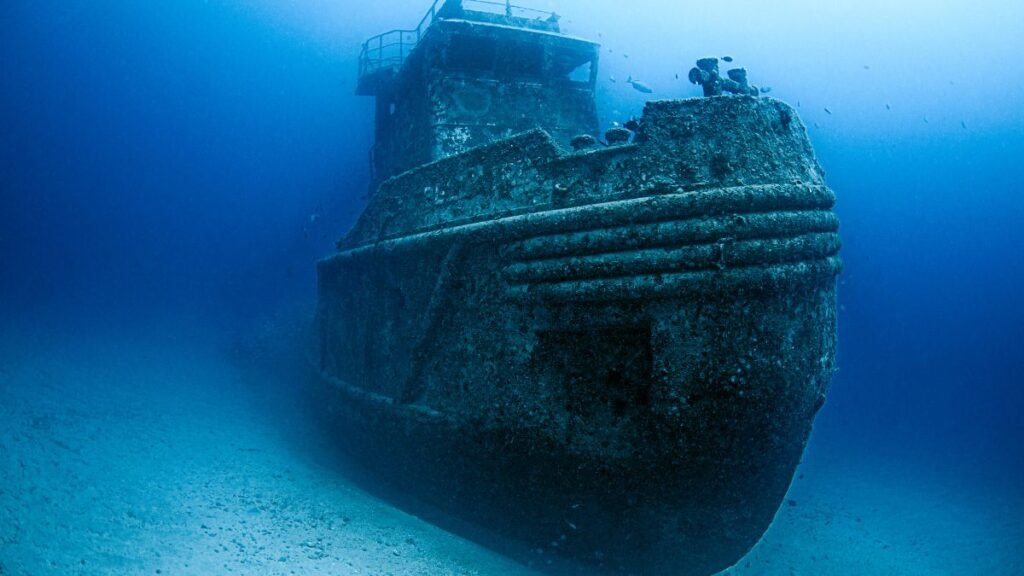
Shipwreck Overview
The Pinguino Wreck, also known as Navio Pingüino, spans 300 feet and is a haven for exploration. Its two sections provide ample opportunities for divers to navigate through its structure. The wreck’s exposed metal surfaces are adorned with fire coral, adding to its visual appeal.
Marine Life Encounters
This site is teeming with diverse species, including seahorses, rays, and the occasional sighting of sharks. From August to September, Goliath groupers aggregate here, exhibiting a behavior similar to their counterparts in Florida. These seasonal encounters make the Pinguino Wreck a dynamic destination for marine enthusiasts.
Dive Planning Tips
Proper dive planning is essential for a safe and enjoyable experience. Use local tide charts to avoid strong surges, and consider underwater scooters to cover the wreck’s length efficiently. Strategies like those used in the Galápagos can help manage currents effectively.
| Tip | Details |
|---|---|
| Tide Charts | Monitor local tides to avoid surge. |
| Underwater Scooters | Ideal for covering the 300-foot wreck. |
| Fire Coral Caution | Avoid contact with exposed metal surfaces. |
For more information on Brazil’s top dive spots, check out this guide. Whether you’re a beginner or an advanced diver, the Pinguino Wreck promises an unforgettable experience.
9. The Almirante Saldanha Wreck
The Almirante Saldanha Wreck offers a fascinating journey into Brazil’s naval history. This former Brazilian Navy vessel was intentionally scuttled in 1993 to create an artificial reef. Today, it stands as a testament to the country’s maritime heritage and a thriving habitat for marine life.
Historical Context
The Almirante Saldanha served the Brazilian Navy for decades before its transformation into an artificial reef. Its sinking marked a new chapter, turning it into a hub for underwater exploration. The wreck’s intact structure provides a unique glimpse into naval engineering and history.
Underwater Exploration
Divers can penetrate the bridge to discover preserved instrumentation, offering a rare experience. The wreck’s maximum depth of 85 feet makes it accessible to intermediate and advanced divers. Its complex structure and marine colonization rival California’s Metridium Fields in terms of biodiversity.
Dive Gear Recommendations
Given the water temperatures ranging from 68°F to 75°F, a full 7mm wetsuit is recommended. Redundant air sources are essential for safety, especially during penetration dives. Wide-angle lenses are ideal for capturing the wreck’s scale and the vibrant marine life surrounding it.
| Gear | Purpose |
|---|---|
| 7mm Wetsuit | Insulation in cooler waters |
| Redundant Air Source | Safety during penetration |
| Wide-Angle Lens | Capture wreck and marine life |
Whether you’re a history enthusiast or a marine life lover, the Almirante Saldanha Wreck promises an unforgettable experience. Its blend of historical significance and underwater beauty makes it a standout among Brazil’s sites.
10. The Cabo Frio Wreck
The Cabo Frio Wreck invites divers to explore a vibrant underwater world teeming with life. Located near Rio de Janeiro, this dive site is accessible via day boats, making it a convenient option for both novice and experienced divers. Its warm waters and diverse marine ecosystem make it a standout destination along Brazil’s coast.
Location and Dive Conditions
The Cabo Frio Wreck lies in clear waters with visibility ranging from 50 to 80 feet. Gentle currents make it suitable for divers of all skill levels. The site’s shallow depth allows for extended exploration, while its proximity to Rio de Janeiro ensures easy access for day trips.
Marine Species Highlights
This dive site is a haven for a wide variety of marine species. Schools of sergeant majors and occasional eagle rays are common sightings. Macro critters, including rare nudibranchs, add to the site’s allure. The biodiversity here is reminiscent of Raja Ampat’s muck diving, offering a unique experience for underwater enthusiasts.
Photography Tips
For underwater photographers, the Cabo Frio Wreck is a dream come true. Use strobes to counteract the effects of particulate-heavy water, ensuring clear and vibrant shots. Dawn dives are recommended for active pelagic activities and optimal lighting conditions. Techniques from Fiji’s macro photography workshops can enhance your results.
| Feature | Details |
|---|---|
| Location | Near Rio de Janeiro |
| Visibility | 50-80 feet |
| Marine Highlights | Use strobes, and dawn dives recommended |
| Photography Tips | Use strobes, and dawn dives are recommended |
Whether you’re exploring the reefs or capturing the vibrant fish, the Cabo Frio Wreck promises an unforgettable experience. Its unique combination of accessibility and marine biodiversity makes it a must-visit spot for divers.
11. The Ilha do Medo Wreck
The Ilha do Medo Wreck offers a thrilling underwater adventure for tech divers. Located at a depth of 130 feet, this steamship wreck requires technical certifications for exploration. Its challenging conditions and rich marine ecosystem make it a standout among Brazil’s dive sites.
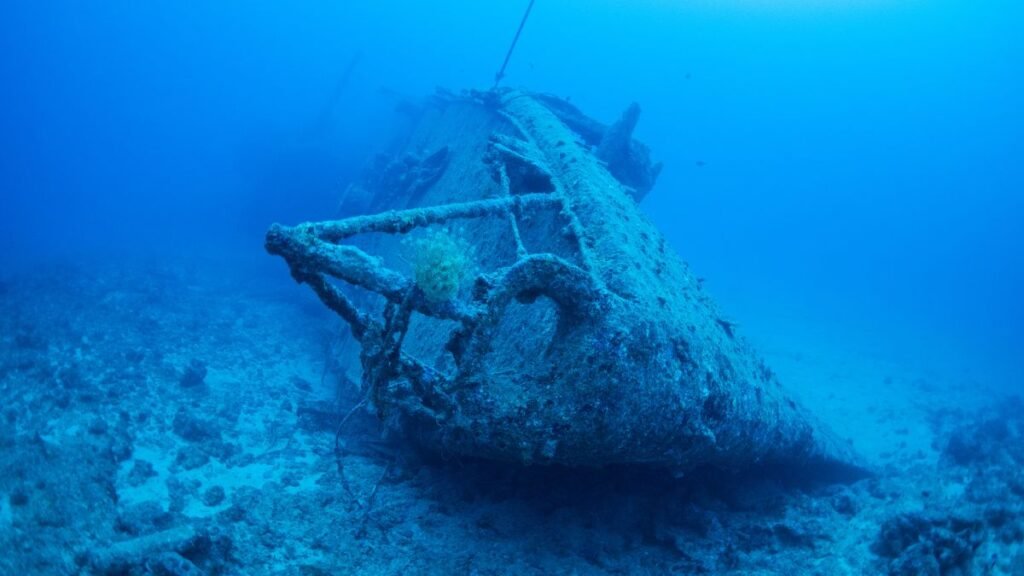
Exploring the Ilha do Medo
This wreck is a treasure trove for advanced divers. Its structure is well-preserved, offering opportunities to navigate through its compartments. Schools of hammerhead sharks are often spotted here, adding to the site’s allure. The marine life and complex topography make it a rewarding challenge for experienced divers.
Unique Dive Experience
The Ilha do Medo Wreck is comparable to Cocos Island’s challenging conditions. Thermoclines at 90 feet require thermal protection, adding to the experience. The site’s biodiversity and deep-water setting create a unique underwater adventure. For those seeking an advanced dive, this wreck is a must.
Best Practices for Divers
Safety is paramount at this site. Use DSMBs for ascent alerts and adhere to strict dive computer protocols. Partnering with local operators ensures a guided and secure dive. These best practices help manage the site’s strong currents and complex conditions effectively.
- Depth: 130 feet, tech diving certification required.
- Highlights: Hammerhead sharks, thermoclines at 90 feet.
- Safety: Use dive safety monitoring boards (DSMBs) and follow dive computer protocols.
- Guides: Partner with local operators for expert guidance.
12. The Guarapari Wreck
The Guarapari Wreck is a captivating underwater site that combines history and vibrant marine ecosystems. This 19th-century schooner was intentionally sunk in 2001 to create an artificial reef, transforming it into a thriving habitat for marine life. Its unique blend of historical significance and biodiversity makes it a must-visit for divers.
Shipwreck History
Originally a merchant vessel, the Guarapari Wreck now stands as a testament to Brazil’s maritime past. Its transformation into an artificial reef has allowed it to serve a new purpose, providing a home for countless marine species. The wreck’s structure remains intact, offering a fascinating glimpse into its storied history.
Marine Life and Ecosystems
The Guarapari Wreck is a haven for biodiversity. Vibrant soft corals cover its surface, while resident loggerhead turtles are a common sight. From December to March, seasonal visits from whale sharks add an extra layer of excitement. This dynamic ecosystem rivals some of the world’s most renowned dive sites.
Dive Safety Tips
When exploring the Guarapari Wreck, monitoring air consumption is crucial, especially in surge-prone areas. Adopting eco-friendly practices, such as avoiding contact with fragile coral growth, helps preserve the site’s natural beauty. Following guidelines from Red Sea eco-diving ensures a safe and sustainable experience for all divers.
- History: 19th-century schooner turned artificial reef in 2001.
- Ecosystems: Vibrant soft corals, loggerhead turtles, and seasonal whale sharks.
- Safety: Monitor air consumption and practice eco-friendly diving.
Conclusion
Brazil’s underwater world offers an unmatched blend of history, adventure, and vibrant marine ecosystems. Its wreck diving destinations are among the most captivating in the world, attracting enthusiasts from all corners of the globe. Whether you’re exploring shallow sites or deeper wrecks, Brazil’s diverse locations promise an unforgettable experience.
For those seeking to explore deeper sites, obtaining advanced certifications is highly recommended. These courses prepare divers for the challenges of navigating complex underwater environments. Additionally, practicing eco-conscious diving ensures that sites like the Guarapari wreck remain pristine for future generations.
Pair your Brazilian wreck diving trip with an Amazon eco-tour for a complete travel adventure. This combination allows you to experience both the underwater wonders and the rich biodiversity of the rainforest. Share your own Brazilian diving stories in the comments below—we’d love to hear about your list of favorite sites! Learn more Watersport.
FAQ
What makes Brazil a great destination for wreck diving?
Brazil offers diverse wreck sites with rich histories and an abundance of marine life. Its warm waters and unique underwater ecosystems attract divers from around the world.
Is wreck diving in Brazil suitable for beginners?
Some sites, such as the Pirangi Wreck, are beginner-friendly due to their shallow depths. However, others, such as the Santa Catharina Wreck, are better suited for advanced divers due to depth and currents.
What marine species can I expect to see at Brazilian wreck sites?
Divers often encounter schools of fish, nudibranchs, rays, and even sharks, such as hammerheads. Each site has its own unique marine biodiversity.
When is the best time to dive in Brazil?
The dry season, from April to October, offers the best visibility and calm conditions for diving. However, specific sites may have unique optimal times.
Are there liveaboard options for wreck diving in Brazil?
Yes, liveaboard trips are available for divers looking to explore multiple wreck sites along Brazil’s coast, offering convenience and extended dive opportunities.
What safety precautions should I take when wreck diving in Brazil?
Always dive within your certification limits, use proper gear, and check local conditions. Hiring a local guide can enhance safety and provide valuable insights.
Can I take underwater photos at Brazilian wreck sites?
Absolutely! Sites like the Naufrágio do Parcel and Cabo Frio Wreck are perfect for underwater photography, with clear waters and vibrant marine life.
How do I choose the right wreck dive site in Brazil?
Consider your experience level, interests, and the type of marine life you want to see. Researching each site’s depth, conditions, and history can help you make an informed decision.
Are there night diving options at Brazilian wreck sites?
Yes, sites like the Rosalina Wreck offer night diving opportunities, providing a unique perspective on marine life and the wrecks themselves.
What gear is recommended for wreck diving in Brazil?
A reliable dive computer, underwater flashlight, and a good-quality wetsuit are essential. Advanced divers may also benefit from a reel and line for navigation.

